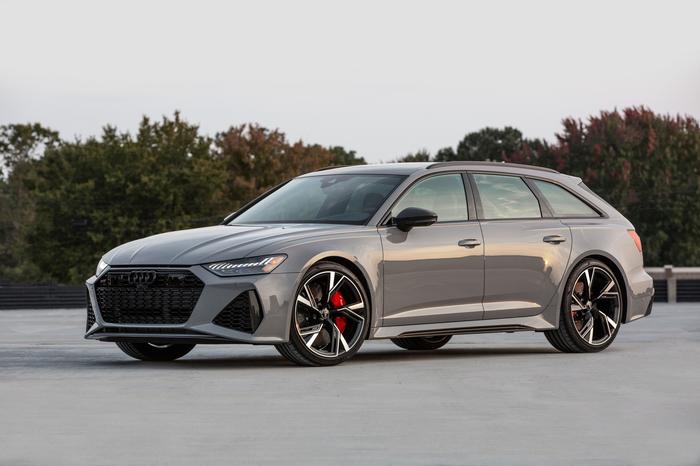Here’s a question you’ve probably pondered quite a few times before, but it’s one that rewards revisiting. If you can have only one car to do it all, from sticking a smile on your face to shuffling down to the shops and everything in between, what would you choose?
For many of us, the quick answer is a fast estate. Melding family-friendly versatility with a ferocious turn of speed, these hot holdalls are the ultimate all-rounders, as comfortable playing the back-road warrior as they are packing in the odd wardrobe or two.

In recent years, souped-up SUVs have stolen some of their thunder, but these lightning-quick load-luggers are experiencing a resurgence. This is especially true at the top end of the price and performance pecking order, where a trio of new arrivals have been welcomed over the past few months, all vying to prove themselves as (cliché alert) ‘all the car you’ll ever need’.
First up is the new (deep breath) Porsche Panamera Turbo S E-Hybrid Sport Turismo. As close to an estate as Zuffenhausen will ever get, it combines 690bhp beneath the bonnet (making it the most powerful machine the company currently sells), with 500 litres of carrying capacity behind the rear seats.
As the name suggests, it is also a plug-in hybrid. Yet this electrical assistance is as much about performance enhancement (how does a McLaren F1-rivalling 3.2sec 0-62mph time grab you?) as it is an eco-friendly, economy-boosting addition, Porsche falling back on experience gleaned through its 918 supercar and 919 LMP1 racer as it begins to embrace an ICE-free future.
A similarly petrol-electric approach is just around the corner for Mercedes-AMG but, until then, we can continue to savour the relatively old-school charms of its E63 S Estate, which has been treated to a nip and tuck in an effort to increase its showroom pulling power. Under the skin, the car remains largely unchanged, including its mighty 603bhp 4.0-litre V8 (cylinder deactivation is the only sop to CO2 reduction here), but there have been some subtle suspension tweaks aimed at rounding off the edges of its predecessor’s sharp low-speed ride.









